Mungyeong Seonyudonggyegok Valley (선유동계곡(문경))
2025-09-10
Wanjang-ri, Mungyeong-si, Gyeongsangbuk-do
+82-54-550-6392
Seonyudonggyegok Valley in Mungyeong is longer and more beautiful than the valley of the same name in Goesan. Daeyasan Mountain (931 meters) runs across both valleys, which are 10 kilometers apart from each other. The valley is relatively untouched as it is not yet well known to the public. At the beginning and the end of the trail are Hakcheonjeong and Chirujeong Pavilions, respectively. Both sides of the valley are lined with thick forests of ancient pine trees. A number of stone carvings can be found in the forest, and the most famous one reads “Seonyugyegok.” It was written by Choi Chi-won, a leading scholar of the Silla kingdom.
Cheongpyeong Recreational Forest (청평자연휴양림)
2024-08-12
8-6 Bukhangang-ro 2246beon-gil, Gapyeong-gun, Gyeonggi-do
+82-31-584-0528
Cheongpyeong Recreational Forest boasts a pristine natural landscape, fresh mineral water, and leisurely walking trails for visitors to rest from the hustle and bustle of the city life. The sight of Cheongpyeongho Lake and the surrounding trees of different kinds offer beautiful varying landscapes throughout the year. The forest is a perfect location for family as well as group retreats.
Jungmisan Recreational Forest (중미산자연휴양림)
2022-09-07
1152, Jungmisan-ro, Yangpyeong-gun, Gyeonggi-do
+82-31-771-7166
Jungmisan Recreational Forest unfolds at the end of a lovely drive along the famous Nongdachigogae Road, the highest ridge road in the vicinity of Seoul. The forest boasts a striking landscape of thick groves of trees and a view overlooking the Namhangang River. During some mornings, the forest’s log cabins are veiled by a thick fog, further adding to the beautiful natural ambience.
Rising 834 meters above sea level, Jungmisan Mountain is a popular sunrise destination frequented by throngs of hikers every year. Thick forests of pine trees create a rooftop of branches from spring to fall. Being surrounded by the tall mountains of Baegunsan, Yumyeongsan, and Yongmunsan, Jungmisan Mountain feels like it is in the inner mountainous region of Gangwon-do, although it is close to Seoul.
The forest has log cabins that can accommodate groups of 4 to 10 people as well as campsites that complement the surrounding natural environment. Visitors can enjoy a comfortable walk through the trees on a trail that winds through the heart of the forest.
Yeoninsan Provincial Park (연인산도립공원)
2025-01-08
Buk-myeon, Ha-myeon, Gapyeong-eup, Gapyeong-gun, Gyeonggi-do
+82-31-8008-8140
The source of Yongchu Falls, Mount Yeoninsan (연인산) stands at 1,068 meters above sea level and features soft terrain and beautiful scenery. Local folklore has it that those coming to the mountain wishing for true love will have their dreams come true.
The soil of Mount Yeoninsan is fertile, offering a great natural environment for a variety of flowers and trees. Numerous types of wild flowers thrive from early spring to late autumn. The trail connecting Mount Yeoninsan with mounts Myeongjisan, Cheonggyesan, and Gwimokbong remains relatively unspoiled by human influence: cooking and camping in the area is strictly forbidden. All the mountains in the trail are over 1,000 meters high. A defining feature of Mount Yeoninsan is the royal azaleas that bloom in late May. The County of Gapyeong celebrates the royal azalea by hosting the Mount Yeoninsan (Natural Ecology) Festival in May of each year.
Also ideal for hiking, Mount Yeoninsan offers a number of trails: one starts from Buk-myeon in Baekdun-ri, one from Mail-ri, and one from Yongchu Valley. With a minimum of climbing, hikers can take in a variety of scenic views, ranging from the bloom of the royal azaleas in the spring to the beauty of the changing leaves in the fall.
Gwangnaru Safety Experience Center (광나루안전체험관)
2025-03-29
238, Neungdong-ro, Gwangjin-gu, Seoul
+82-2-2049-4061
Gwangnaru Safety Experience Center was founded in 1999 after two fire accidents in which many children lost their lives. These tragedies emphasized the necessity of establishing a disaster training center for common citizens.
Gwangnaru Safety Experience Center is a three-story building with one basement floor, covering an area of more than 5,000 m². The basement floor includes a small theater. The first floor is set up for natural disaster training and consists of an orientation hall, storm simulation training room, earthquake simulation room, computer tests on fire safety knowledge and others. The second floor is a place for artificial catastrophe training. It consists of a smoke escape training room, fire extinguisher training room, first-aid (CPR) training room and practice place for calling 119. The third floor is used for rescue training and consists of a rescue training room, screening room, training for professionals and video examples of the five biggest disasters that have occurred in Seoul. Overall there are about 20 training areas established, so citizens can experience the imitation of a disaster by themselves and learn easily and in an interesting way how to cope with a disaster.
Gwanghwamun Plaza (광화문 광장)
2025-03-13
172 Sejong-daero, Jongno-gu, Seoul
+82-2-120
Gwanghwamun Plaza was opened to the public in August 2022 after renovation. Sejong-ro, the main street of Seoul with 600 years of history, has been reborn as a space for historical and cultural experiences by restoring Yukjo Street. Woldae (Elevated Ceremonial Stage) was reconstructed at the entrance of the "Plaza that Recovers the History of Gwanghwamun," and the statue of Haetae, an imaginary animal that judges good and evil, has been restored. In addition, traces of Yukjo Street, the main street of Hanyang in the past, were restored in the ‘Plaza that recreates the scenery of Yukjo Street’ near Sejong-ro Park, with a scale model installed. This is an excellent place for a stroll with beautiful scenery, including Gyeongbokgung Palace and Bugaksan Mountain.
Paradise Spa Dogo (파라다이스 스파 도고)
2025-09-09
176 Dogooncheon-ro, Asan-si, Chungcheongnam-do
+82-41-537-7100
Paradise Spa Dogo, a government-designated hot spring in Korea, is a large resort facility opened by the Paradise Group in Asan, Chungcheongnam-do, an area renowned for its hot springs. It is the first government-designated hot spring in Chungcheong-do, a designation granted after review and approval by the Ministry of the Interior and Safety. Spanning an area of 24,622 square meters, the facility can accommodate up to approx. 5,000 guests. It has a Bade (meaning bathing) pool, which can also be used for hydrotherapy; a large hot spring bath where you can enjoy a sauna and relax in warm sulfur spring water year-round; and various water recreational facilities. In particular, the outdoor event spa, featuring various seasonal themes, is quite popular. In winter, you can enjoy a Siberian ginseng water bath, a ginger water bath, a tangerine peel water bath, and many more. Additionally, unique weekend package programs await you with activities like kimchi-making, persimmon-picking, and ranch experiences in addition to enjoying the hot spring.
Cheonggyecheon Stream (청계천)
2024-05-16
Changsin-dong, Jongno-gu, Seoul
+82-2-2290-7111
Cheonggye Plaza was built on Sejong-ro Street, where Cheonggyecheon Stream begins. It was built between Dong-A Ilbo, the starting point of the Cheonggyecheon Stream restoration, and Sindap Railroad Bridge, with a length of 160 meters, a x_width of 50 meters, and a total area of 6,962 meters squared. The plaza is decorated with fountains, waterfalls, and walking paths. It was created as a place for meetings, harmony, peace, and unification, to celebrate the significance of the restoration of Cheonggyecheon Stream. A miniaturized version of Cheonggyecheon Stream is displayed here, providing an overview of the restored stream. There are also interpretive panels about the 22 bridges that cross Cheonggyecheon stream. Fountains of various shapes create beautiful scenery. Cheonggyecheon Stream is accessible from the square through stairs on the left and Cheonggye Trail on the right. There is also an 18-meter tunnel on the Cheonggye Trail, providing a unique experience for citizens entering Cheonggyecheon Stream from the plaza. After constructing Cheonggyecheon Plaza, the Seoul Metropolitan Government made it a car-free street on public holidays so that the plaza, waterside area, and streets could be used as cultural spaces for citizens to relax. A spectacular sight is created by three-color lights illuminating the fountains and a two-tiered waterfall coming down from a x_height of four meters. Palseokdam, made of eight stones from eight provinces in Korea, was laid along the waterfall's sides.
Gugokpokpo Falls (구곡폭포)
2021-04-28
254, Gangchongugok-gil, Namsan-myeon, Chuncheon-si, Gangwon-do
+82-33-261-0088
Located at the foot of Bonghwasan Mountain in Chuncheon, Gugok Falls with a x_height of 50 m is one of the representative tourist destinations in the Gangchon area. It was named “Gugok” because the falls twist (gok) and turn nine (gu) different times before dropping down, and is also called “Guguripokpo.” Gugok Falls flowing down from a huge stone wall create fantastic scenery. Many tourists visit the falls every year to enjoy cool, refreshing water to overcome the heat wave in summer and to admire a majestic view of the giant ice wall in winter. The road from the ticket booth to the falls is gentle and requires about 20 min walk. It is an easy walking path surrounded by woods and the valley. Visitors can also try to find the nine wooden panels inspired by the spirit of Gugok and designed with Hangeul alphabet “ㄲ” letters (such as 꿈, 끼, 꾀, 깡, etc.). If you go up for about 40 min along the Kkalttak Pass, which is on the right side of the Gugok Falls entrance, you will find Munbae Village, nestled in a basin. The village restaurants are known for local dishes, such as wild vegetable bibimbap and folk liquor. Visitors can also stay overnight at the National Leisure Campground built in the Gukgok Falls Tourist Area.
Paldangho Lake (팔당호)
2021-05-25
Namjong-myeon, Gwangju-si, Gyeonggi-do
+82-31-760-2000
Paldangho, a man-made lake, lies beside the townships of Toechon-myeon and Namjong-myeon in Gwangju-si, Gyeonggi-do. Completed in 1973, this reservoir stores approximately 250 million tons of water, which is supplied to the Seoul and Gyeonggi regions. It is also one of Gwangju's tourist attractions, offering an inspiring view and a scenic lakeside drive. Don’t miss a stop at the Paldang Observatory for a breathtaking view of Paldangho Lake.
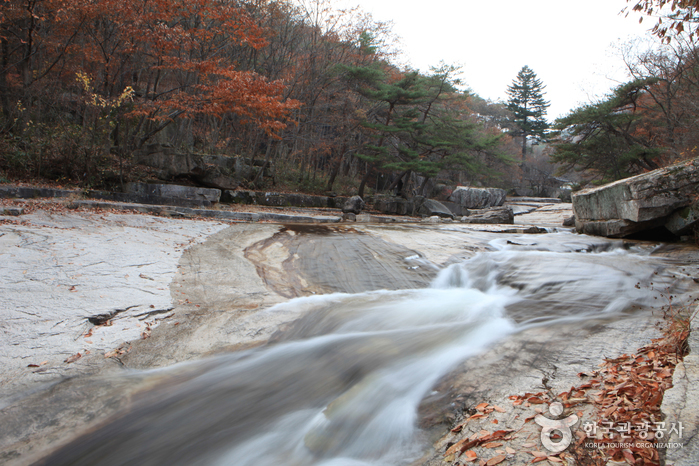
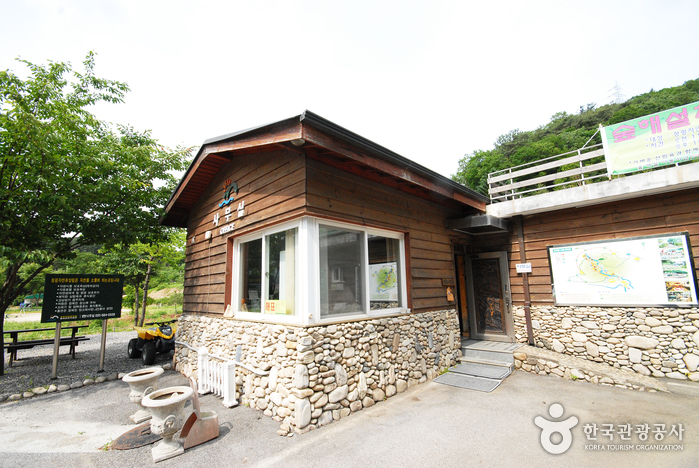
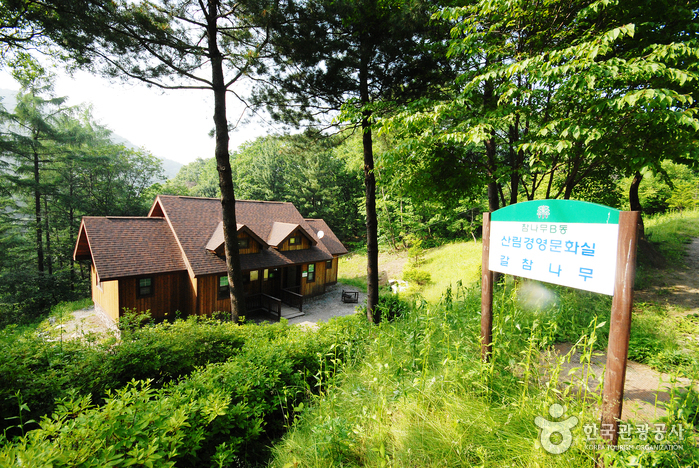
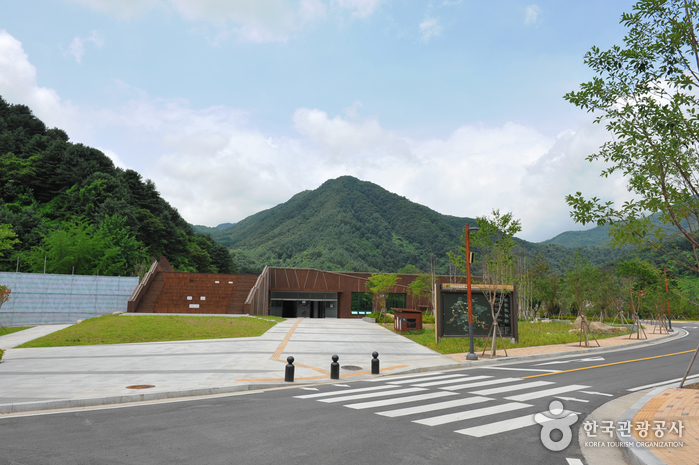
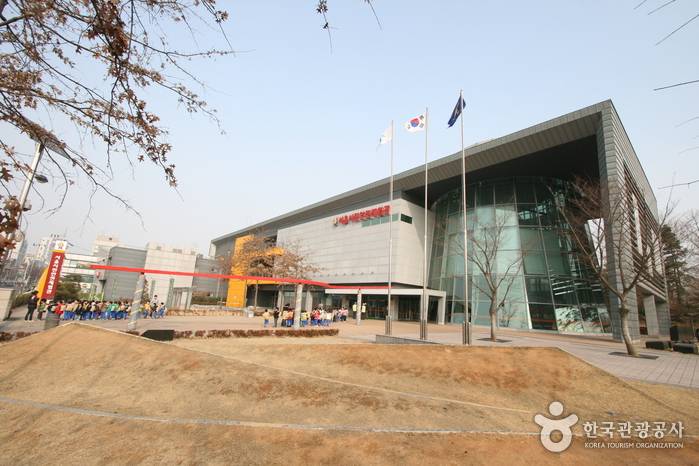
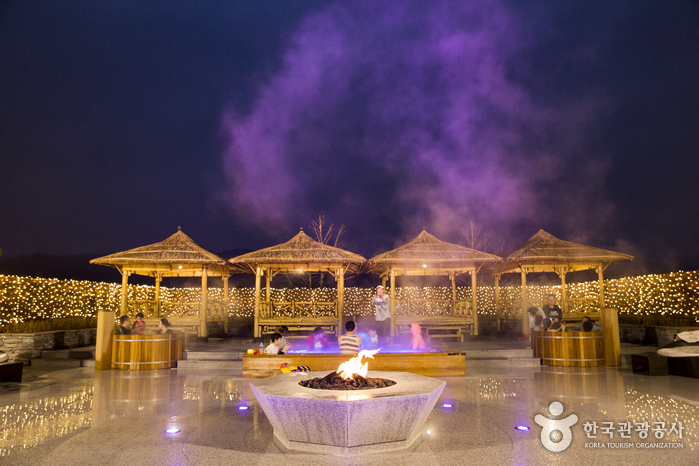
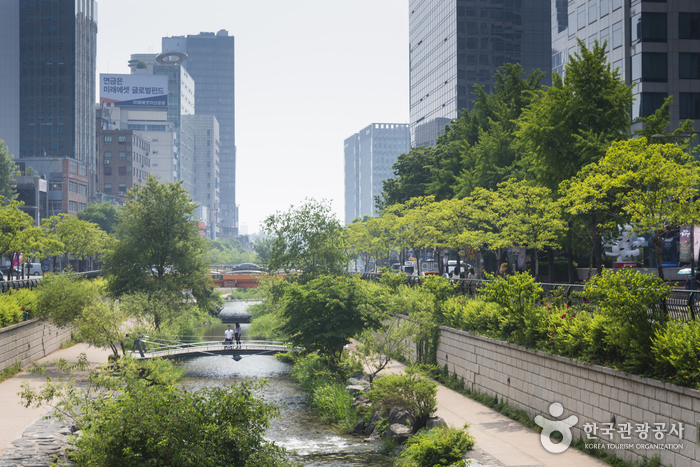
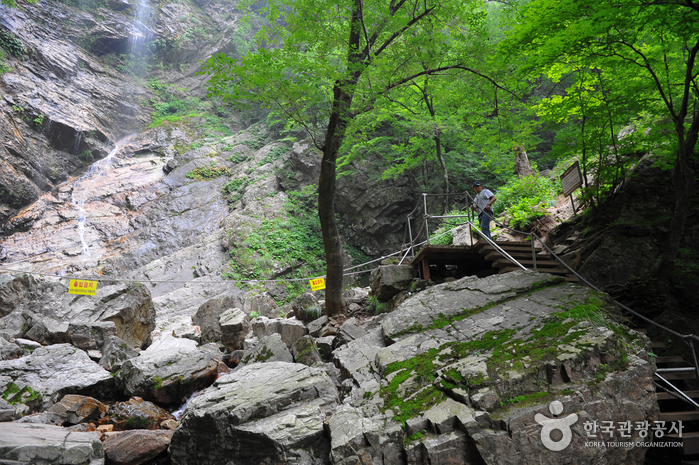
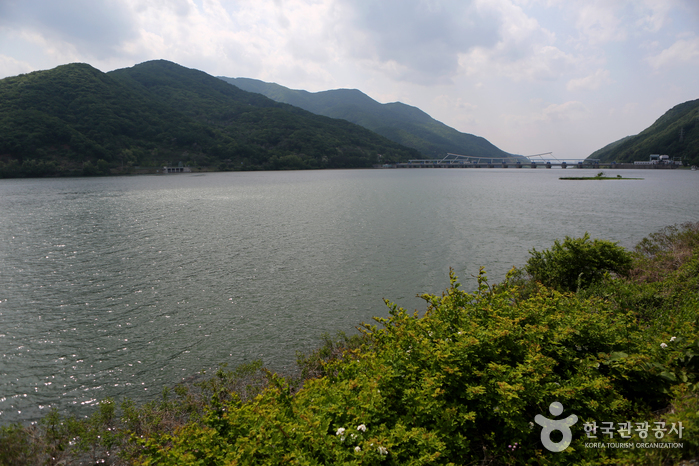
 English
English
 한국어
한국어 日本語
日本語 中文(简体)
中文(简体) Deutsch
Deutsch Français
Français Español
Español Русский
Русский